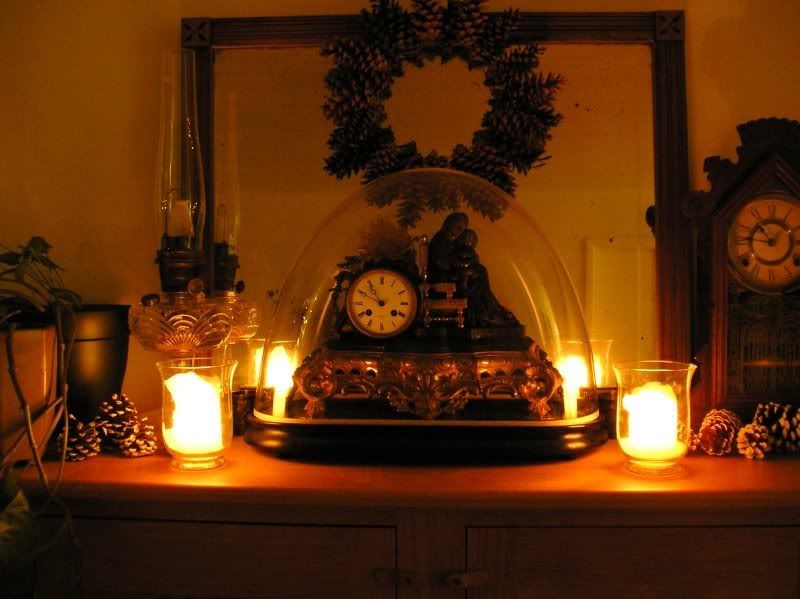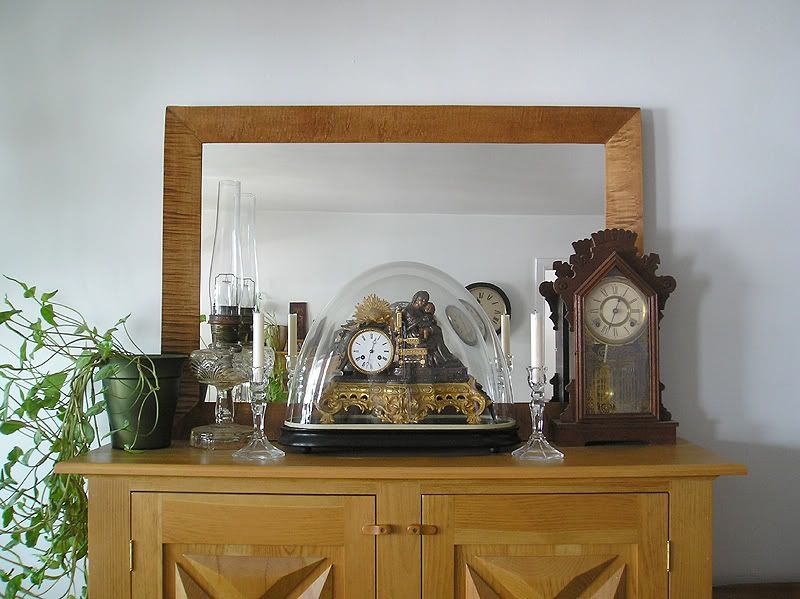I fancy myself to be quite an antiques buff (clocks, mirrors, lamps, and furniture), and condition is always very important. The first mirror that I bought (several years ago at a yard sale, for probably no more than 10-15$) had been stripped and sanded. I have thought about refinishing it with a stain and varnish many times, but now that I have the second mirror, I'm glad I waited.
This second mirror still has a wonderful original shellac finish on it. I plan to eventually copy this finish on the other mirror (the other mirror is bare wood).

Both mirrors are made of solid walnut (a very beautiful and expensive wood), and are in the Eastlake style. I would also guess that they date to this time period (1880-1890). They both have the same kind of thick cut glass. I avoid using the term "beveled" for these, since they are actually not cut on a bevel.

The cut on these mirrors is actually quite unusual, and difficult to photograph. They basically have a shallow concave (scoop) cut along the edges, which gives an interesting "tube" style reflection on the edges. These criss-cross at the corners, creating an X. Another nice thing to note is how WIDE the cut is. Generally, when you buy beveled glass from a glass shop, you pay by the square inch. The deeper the cut, the more expensive it will be. The standard is about 3/4" and sometimes a bit wider at 1". The cut on these mirrors is 1 1/2".
Both mirrors have damage to their silvering, but the second mirror is a bit worst. I should note, however, that I *LOVE* mirrors with imperfect silvering. The large mirror (last photo) is actually my least favourite because it looks too perfect. The glass is definitely old, and there are distortions in it, but it's not as interesting as a spotty dull old mirror.

The backs both have the same t-g pine planks screwed in place with slot screws.

For years at my old apartment, I used the mirror over my diamond panel bookcase, until it got replaced with an even larger mirror (another yard sale find). You can see the setup in these two photos. One was at Christmas time (with white-tipped pine cones and candles).


The current (larger) mirror (which was also a whole other restoration story on its own) works better with the scale of the bookcase:

I have plenty of other smaller mirrors (some very plain, some very ornate), which I will eventually be digging out of boxes and putting up once I'm closer to the decorating stage in my renovations. I also have a number of beautiful old lamps, like the Aladdin in the above photo.

What a great score. Congratulations!
ReplyDeleteVery nice find! I love the carvings.
ReplyDelete